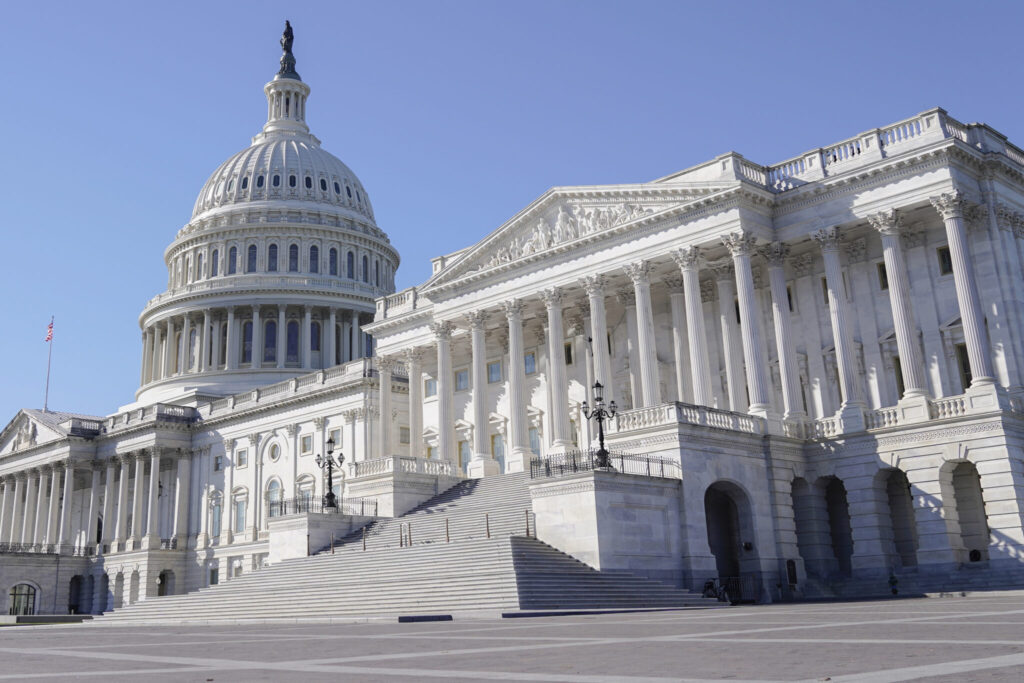The credit rating agency Moody’s Investors Service lowered its outlook on the U.S. government’s debt to “negative” from “stable,” citing the cost of rising interest rates and political polarization in Congress. Moody’s retained its top triple-A credit rating on U.S. government debt, though it is the last of the three major credit rating agencies to do so. Fitch Ratings lowered its rating to AA+ from AAA in August, and Standard & Poor’s downgraded the U.S. in 2011. A reduced outlook, however, raises the risk that Moody’s could eventually strip its triple-A rating from the U.S. as well.
Quick Read
- Moody’s Lowers Outlook on U.S. Government Debt:
- Moody’s Investors Service downgraded its outlook on U.S. debt from “stable” to “negative.”
- It retained the triple-A credit rating but indicated potential future downgrades.
- Impact of Other Credit Agencies’ Ratings:
- Fitch Ratings downgraded U.S. debt in August; Standard & Poor’s did so in 2011.
- A lower rating could lead to higher interest rates on U.S. Treasury bills and notes.
- Rising Interest Rates and Fiscal Concerns:
- The yield on the 10-year Treasury has risen sharply since July.
- Moody’s cited concerns over large fiscal deficits and weak debt affordability due to high interest rates.
- Biden Administration’s Response:
- The administration disagreed with the negative outlook, emphasizing the strength of the U.S. economy and the status of Treasury securities.
- U.S. Budget Deficit and Interest Costs:
- The federal budget deficit increased in the last fiscal year.
- Rising interest rates are expected to increase the national debt’s interest costs.
- Political Polarization and Congressional Dysfunction:
- Moody’s noted political divisions in Congress as a factor in its outlook downgrade.
- Recent events, such as debt limit brinkmanship and threats of a government shutdown, were highlighted.
The Associated Press has the story:
Moody’s lowers US credit outlook, though keeps triple-A rating
Newslooks- WASHINGTON (AP)
The credit rating agency Moody’s Investors Service lowered its outlook on the U.S. government’s debt on Friday to “negative” from “stable,” citing the cost of rising interest rates and political polarization in Congress.
Moody’s retained its top triple-A credit rating on U.S. government debt, though it is the last of the three major credit rating agencies to do so. Fitch Ratings lowered its rating to AA+ from AAA in August, and Standard & Poor’s downgraded the U.S. in 2011. A reduced outlook, however, raises the risk that Moody’s could eventually strip its triple-A rating from the U.S. as well.
A lower rating on U.S. debt could cost taxpayers if it leads borrowers to demand higher interest rates on Treasury bills and notes. The yield on the 10-year Treasury has risen significantly since July, from about 3.9% to 4.6% Friday, an unusually sharp rise.
Some market analysts have said the August Fitch downgrade may have contributed to that increase, though most point to other factors as bigger drivers, such as the Federal Reserve’s commitment to keeping its benchmark rate at a 22-year high to battle inflation.

“In the context of higher interest rates, without effective fiscal policy measures to reduce government spending or increase revenues, Moody’s expects that the U.S.’s fiscal deficits will remain very large, significantly weakening debt affordability,” the agency said in a statement.
The Biden administration criticized Moody’s decision.
“While the statement by Moody’s maintains the United States’ Aaa rating, we disagree with the shift to a negative outlook,” Deputy Treasury Secretary Wally Adeyemo said. “The American economy remains strong, and Treasury securities are the world’s preeminent safe and liquid asset.”
The federal government’s budget deficit jumped to $1.7 trillion in the budget year that ended Sept. 30, up from $1.38 trillion the previous year. Analysts have warned that with interest rates heading higher, interest costs on the national debt will eat up a rising share of tax revenue.
Separately, congressional lawmakers left Washington for the weekend without a plan to avoid a potential government shutdown that could occur by Nov. 17. Moody’s cited congressional dysfunction as one reason it lowered its outlook on U.S. debt.
“Recently, multiple events have illustrated the depth of political divisions in the U.S.: Renewed debt limit brinkmanship, the first ouster of a House Speaker in U.S. history, prolonged inability of Congress to select a new House Speaker, and increased threats of another partial government shutdown,” Moody’s said.







